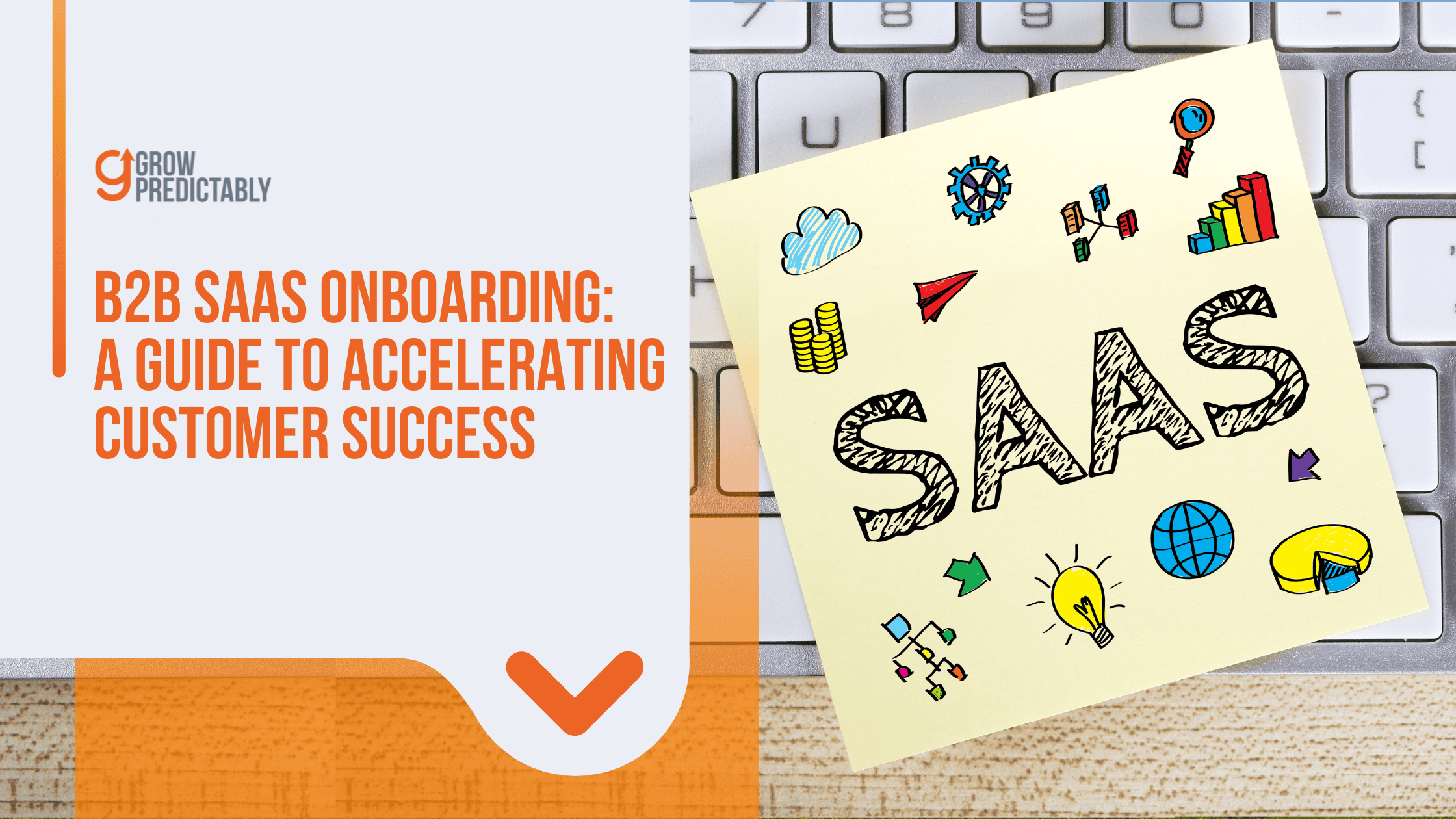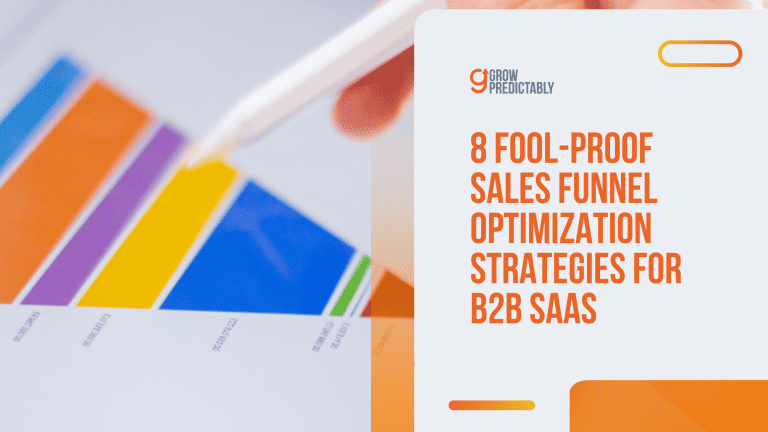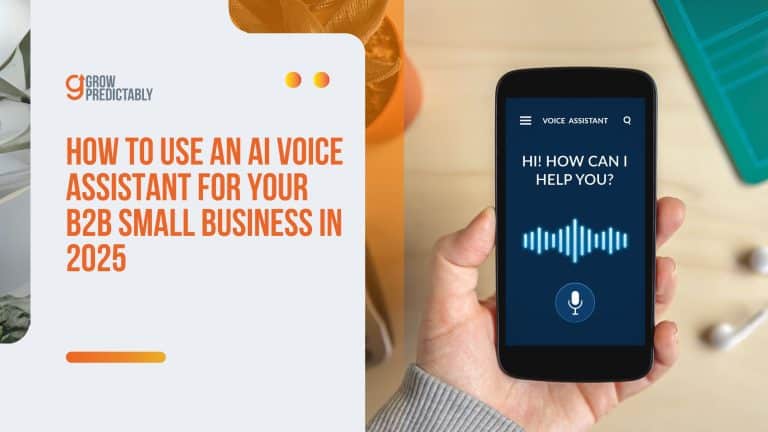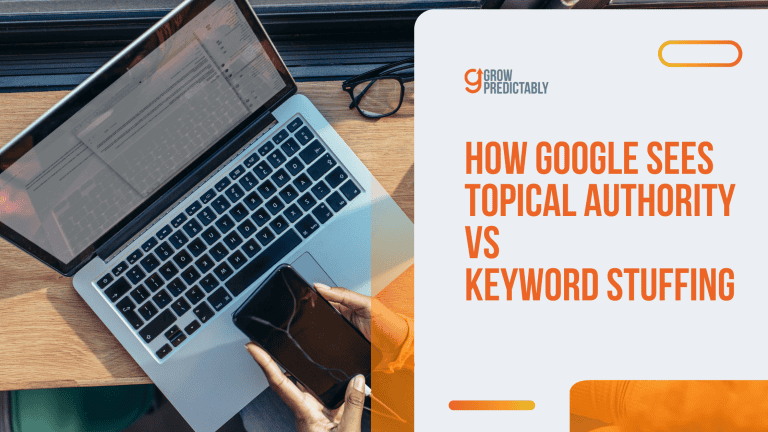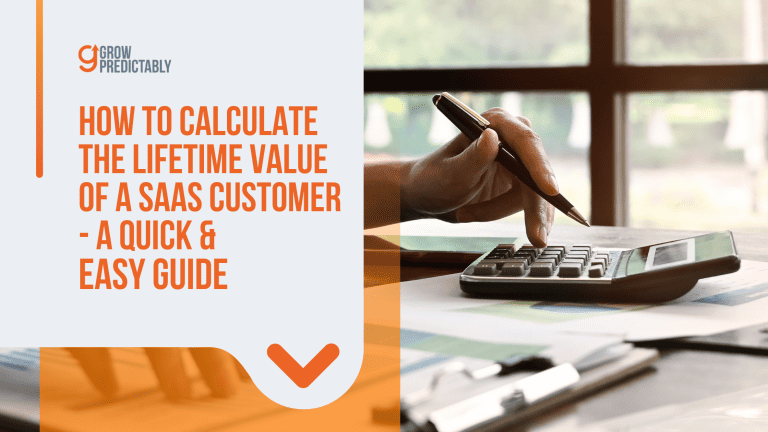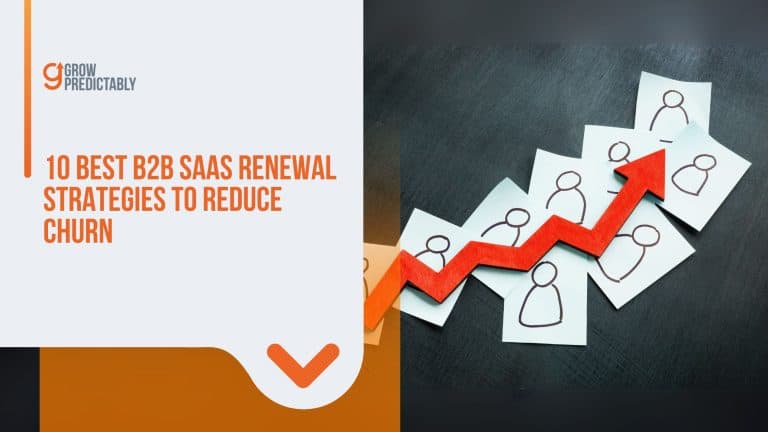B2B SaaS Onboarding: A Guide to Accelerating Customer Success
Are you finding it challenging to keep your B2B customers engaged right from the start?
Many businesses face this issue when their customer onboarding process doesn’t quite have the impact they hoped for.
Losing potential long-term clients shortly after initial contact can be frustrating.
But don’t worry; this is something that any B2B can definitely address.
The secret lies in creating an unforgettable onboarding experience in a market where 86% of customers stay loyal when continuous onboarding is provided. (Source)
This isn’t just a minor improvement in customer loyalty; it can make a significant difference to your overall success.
By refining your B2B SaaS onboarding, you’re enhancing the entire customer journey.
This blog post will reveal the key elements of designing a successful user onboarding flow for SaaS companies.
We’ll explore what makes onboarding truly effective, ensuring your customers aren’t just temporary visitors but committed partners.
Ready to learn the strategies that leading companies use to secure customer loyalty?
Let’s transform those initial interactions into lasting relationships!
Understanding B2B SaaS Onboarding
So, you’ve got your B2B SaaS product all set, and you’re ready to roll it out to the world.
But wait, how do you make sure the people who sign up actually stick around?
That is where onboarding comes into play.
The customer onboarding process is like your software’s way of saying, “Hey, welcome! Let me show you the ropes.”
It’s all the steps you take to get a new customer, from “Hey, I just bought this” to “Wow, I’m a pro at using this!”
It is a small but vital element that ties into making your B2B SaaS marketing strategy work.
You’re not just selling them a tool; you’re helping them understand how to use it to solve their actual business problems and create stellar onboarding experiences for all.
According to a survey by Wyzowl, nearly 9 out of 10 people say that having a good onboarding experience is important.
That’s almost everyone!
A good SaaS onboarding experience also leads to higher customer retention, increased product adoption, and even higher average revenue per user (ARPU).
In other words, nailing your B2B SaaS onboarding process is a surefire way to keep customers happy and coming back for more.
As you become familiar with the importance of a solid onboarding process, it’s crucial to recognize how building relationships during this stage can enhance customer loyalty.
This leads us directly to understanding the role of connections in successful onboarding.
The Importance of Building Relationships During Onboarding

Now that you understand the basics of B2B SaaS onboarding let’s talk about the importance of building relationships during this crucial stage.
It’s easy to think that once a customer has signed up for your product or service, the hard work is over.
But in reality, onboarding experiences that create customer satisfaction never just stop at signing up.
Let’s break it down:
First Impressions Matter
Just like meeting someone new, the first impression of your software sticks with people.
A smooth SaaS onboarding experience makes sure it’s a good one.
It’s your chance to show your customers they’ve made the right choice, which is important in keeping them around for the long haul.
Reduce Customer Churn
Did you know that a lot of customer churns happen because customers don’t understand the product well enough?
It’s true!
If customers feel lost and don’t get the hang of the software quickly, they’re more likely to bounce.
Effective onboarding paths get them past those initial hurdles.
Boost Customer Success
When customers know how to use your product effectively, they’re more likely to succeed.
And if they’re succeeding, guess what?
They will stick around, use your product more, and maybe even upgrade their plans because of the success they’ve had during their onboarding experiences.
Plus, happy customers are the ones who tell their friends about your awesome tool!
Save on Support Costs
Here’s a cool fact: effective onboarding experiences can reduce the number of support calls and emails your team gets.
If you can prep your customers up front with great SaaS onboarding content, they won’t need to ask for help as often.
Think of it as teaching someone to fish instead of just giving them a fish whenever they’re hungry.
Encourage Upgrades and Upsells
Once customers are comfortable using your basic features, they’ll be more open to trying out the more advanced bells and whistles.
That’s your chance to introduce upgrades or additional services that can really amp up their experience (and your revenue!).
Once your users start experiencing your SaaS product’s more advanced features and get more value from it, they can be encouraged to stick with your brand for the long haul.
When done right, a SaaS onboarding process can become a valuable touchpoint for building trust and loyalty among existing and new business customers.
And as we all know, loyal customers are more likely to stick around and even advocate for your brand.
Here’s the lowdown: some pretty telling numbers that spell out why solid onboarding can’t be ignored in B2B SaaS:
- Organizations plan to increase digital interactions by 1.5x by 2024.
- 74% of companies have a dedicated customer onboarding team.
- 60% of companies use at least 4-6 onboarding tools for customer onboarding journey.
- 63% of customers consider the company’s onboarding program when making a purchasing decision.
- Almost 60% of companies say they are unsatisfied with their product’s current user onboarding experience.
Once you’ve built a strong connection, the next step is to implement effective strategies to keep the customer engaged.
That’s where our five steps for creating a standout B2B SaaS onboarding process come into play.
5 Steps to Create a Killer B2B SaaS Onboarding Process
Have you ever started using an app and got totally lost?
Frustrating, right?
Well, that’s exactly what SaaS companies must prevent their customers from feeling when going through their user onboarding flow.
Don’t worry, there are steps you can take to create an effective SaaS user onboarding experience for all your subscribers.

An awesome onboarding process is like giving your users a super-cool map that shows them all the amazing treasures your app holds.
Here’s how to nail this:
Step 1: Map Out the Customer Journey
Imagine you’re going on a road trip.
The first step in your onboarding tasks?
You gotta map it out.
For your customers, their road trip starts the moment they hear about you and doesn’t end until they’re total fans, telling everyone how awesome your SaaS is.
So, here are your trusty tools and tricks:
- Draw a Map (But Make it Digital): Create a digital flowchart that shows all the stops along the customer’s journey. It’s like using Google Maps but plotting personalized learning paths your customer takes from discovering you to loving you. Tools like Lucidchart help make that map super clear and easy to follow.
- Milestone Markers: Just like on a road trip, you need signs along the way. What big wins should your customer hit by day 1, week 1, or month 1? These are like those cool landmarks you don’t want to miss.
- Chat and Check-in: Remember to keep the convo going. Asking your customers how they’re doing with quick surveys or messages is like checking the rearview mirror to ensure everyone’s happy and comfy on the drive.
Step 2: Personalize the Welcome
Just tossing out the same old “Hey there!” to everyone?
Nope, we’re not about that life.
Let’s make sure when someone signs up, they feel like you’re greeting them at the door with their favorite snack.
Yup, it’s all about getting personal in your customer onboarding process.
Here’s the deal on how to be the host with the most:
- Get to Know Them: Think of it like inviting guests over. If you’re feeding important guests, finding out if anyone has allergies helps, right? This is why it’s crucial to know your audience. Figure out who’s coming to your party – are they big companies or solo freelancers? What’s their gig – tech wizard, marketing guru? Use that info to serve up a welcome that speaks their language.
- Roll Out the Welcome Video: Ever notice how a quick video can make things a zillion times clearer? A short, sweet video saying “Hi” in your SaaS onboarding flow and walking them through your product can do wonders. It’s like showing them around your place but way cooler.
- Help Desk Ready to Go: Have you ever been to a friend’s house and had no idea where the bathroom is? Awkward. Now, imagine you’ve got all the answers they need in one spot—that’s your resource hub. FAQs, how-tos, real-life stories—it’s like the blueprint to your house, leaving them feeling all comfy and sorted.
Step 3: Deliver Value Fast
So, people signed up for your app because they’ve got this hunch it’s going to be their hero, right?
Our job?
Prove ’em right—and fast!
Here’s the game plan:
- Spotlight on Quick Wins: Think of these as your app’s superpowers. Which features are like hitting the jackpot straight away? Point your new users to these pronto. It’s like finding the best snack in the kitchen without having to dig around—pure gold!
- Show Off Their Progress: Have you ever played a video game and seen your progress bar inching up? Pretty satisfying, huh? Let’s give your users that same buzz in their onboarding journey. A little bar or something that fills up as they get the hang of things can make a big difference. It’s like cheering them on every step of the way.
- Acknowledgement for Early Wins: Who doesn’t love a bit of praise? When your users nail something, let’s celebrate. A quick message or a cool badge can do wonders for customer satisfaction. Put some effort into giving them a personalized acknowledgment of their progress.
Step 4: Offer Exceptional Support
You know how it is—questions will come up—it’s like a universal truth or something.
But hey, it’s all good!
What matters is how your customer success team catches those questions with open arms.
Being on standby to swoop in with answers and solutions?
That’s the golden ticket.
Okay, wanna hear some next-level tips?
Let’s roll:
- 24/7 Support Systems: Think of this like having a superhero team that’s always on call, whether it’s day or night. Whether you’ve got a cool chatbot or a real-life person on the end of a helpline, the goal is to ensure your users can snag help whenever they hit a snag. It’s like having a 24-hour convenience store for solutions!
- Dedicated Customer Success Manager: This is for the big leagues. If you have bigger accounts or users who are kind of a big deal, give them a VIP pass to their very own go-to person. It’s like having a personal shopper but for support. They get to know you, what you like, what problems you usually face, and how to fix them fast.
- Proactive Support: Imagine you could predict the future, or at least the next hiccup your user might face. By using data analytics, you can! This is about spotting trouble before it even happens and reaching out with a solution on hand. It’s like knowing it will rain and handing out umbrellas before the first drops even fall.
Step 5: Ask for Feedback—and Act on It
This last item in your onboarding tasks is about hearing your customers’ opinions.
Think of customer feedback like the golden nuggets you find in a cereal box—exciting, valuable, and kinda makes your day.
It’s essential for keeping that conversation going both ways.
You talk, they talk, and together, you make a positive SaaS user onboarding experience.
Now, for the pro moves:
- Regular Check-Ins: This isn’t about waiting for things to go sideways before saying, “Hey, what’s up?” Schedule calls or shoot over surveys regularly. It’s like saying hi to your neighbor. Do it often, and you’ll always know what’s happening in their yard.
- A/B Testing: Ever tried on two outfits to see which one looks better? That’s A/B testing in everyday life. Apply that to your SaaS user onboarding process. Test out different ways of doing things to see what clicks with your customer base. Keep what works, tweak what doesn’t.
- Community Building: Encourage your users to chat with each other. Create spaces to share their ups and downs, tricks, and fixes. It’s like having friends all helping each other with study tips—the collective brainpower can be mind-blowing! Plus, it’s another way to show you’re invested in their success.
Now that you have a structured plan, equipping yourself with the right tools can make these steps even more impactful.
Let’s explore some essential tools and resources that can elevate your onboarding strategy.
But before that, let’s go over one case study that highlights the significance of having certain practices in place in your onboarding process.
Userpilot Enhanced Sked Social’s Onboarding Success with Checklists
In this case study, Sked Social faced a challenge in ensuring new users remained engaged and successfully adopted their platform.
Method Used:
To address this issue, Sked Social utilized Userpilot’s onboarding checklist to integrate within their application in order to guide users through key tasks essential for activation.
Implementation of Solution:
- Customers are first welcomed with a pop-up modal upon signing in, which introduces the first task—adding their first account.
- Sked Social offers choices for personalized guidance, either through a one-on-one call or by following the onboarding sequence.
- The checklist, automatically opened, contains four critical tasks designed to prevent user overwhelm and encourage completion.
- The checklist incorporates psychological strategies like a progress bar and endowed progress to motivate users, similar to the mapping out customer journeys and personalizing welcomes discussed in the guide.
Results Achieved:
Users completing the checklist were over three times more likely to convert to paying customers.
Key Notes:
Sked Social’s results from leveraging Userpilot’s checklist mechanism helps us see the relevance in implementing key strategies in a customer onboarding strategy.
- User Engagement Boost: The interactive, step-by-step approach mirrors delivering fast value and offering exceptional support found in effective onboarding strategies.
- Simplified User Education: Checklists are linked to product tours, reinforcing both education and engagement, exemplifying how guidance and support lead to user success.
Sked Social’s approach aligns with the guide’s steps by mapping out customer journeys, personalizing the experience, delivering immediate value, and providing support, all resulting in notably higher conversions.
This case study demonstrates how thoughtful onboarding, informed by established principles, can transform your users’ adoption of your solutions after the onboarding phase.
Tools and Resources for Effective B2B SaaS Onboarding
Now that you have an overview of the steps to create a personalized and valuable customer onboarding experience, let’s dive into some tools and resources to help you achieve this goal.
Essential Tools and Software for Onboarding
First things off, the right tools can make or break your SaaS user onboarding experience.
Think of these tools as your gourmet kitchen gadgets – they’re here to help you whip up the perfect customer welcome.
- Learning Management Systems (LMS): Platforms like Udemy for Business or Teachable are your go-to’s for creating engaging, educational content. They’re like the cool librarians pointing your customers to the “must-reads.”
- Interactive Guides and Tutorials: Tools like WalkMe or Pendo are the sherpa guides for your product. They offer step-by-step walkthroughs, helping customers feel like locals in a new city.
- Feedback and Survey Tools: Want to know how you’re doing? Tools like SurveyMonkey and Typeform are friendly neighborhood pollsters that gather the lowdown on your SaaS user onboarding process.
Integrating Educational Resources
Okay, you’ve got the tools, but how do you use them to make learning as addictive as scrolling through dog videos?
Easy!
- Customized Learning Paths: Just like choosing your own adventure books, these paths give customers the control to learn at their own pace and preference. Whether they’re the “read every detail” type or the “let’s just wing it” kind, there’s something for everyone.
- Video Content: In an era where TikTok reigns, video is king. Creating short, digestible videos can help demystify your product faster than you can say “action!”
- FAQs and Forums: Sometimes, the best teacher is the kid who sits next to you in class. FAQs and community forums offer peer-to-peer advice and insights, making customers feel part of the club.
With these tools in hand, choosing the right onboarding approach will be critical to effectively reach your customers.
We’ll compare low-touch and high-touch onboarding processes to help you decide.
How to Choose the Right SaaS Customer Onboarding Process
Think of the SaaS user onboarding process as guiding someone through a new neighborhood.
Depending on who they are, how you introduce them around the block might differ, right?
That’s pretty much the idea behind choosing the right SaaS onboarding process for your customers.

So, what are your options?
Basically, you have two main approaches: low touch and high touch onboarding.
Let’s break these down:
Low-Touch Onboarding: Keep It Simple, Keep It Cool
Low-touch user onboarding is all about making things super easy and hands-off.
Imagine it’s like setting up a new phone—quick, painless, and you can pretty much figure it out yourself with a few prompts.
Here’s the deal with low touch:
- Automated Emails: Right after signing up, your customer gets an email. It’s friendly, it’s warm, and it says, “Here’s how you start!”
- Self-service Resources: Think of FAQs, video tutorials, and guides that customers can check out when they get stuck or just curious. It’s like Googling the best way to make homemade pizza – everything’s right there.
- Simple Tasks for New Users: Give them simple stuff to start with so they feel like champions from day one. It encourages users and keeps them going.
Low-touch user onboarding is perfect for when you’ve got an app that’s as easy to use as sending a text message.
No need for a ton of guidance—users can just jump in and get going.
High-Touch Onboarding: Hands-On, Personalized Attention
High-touch user onboarding is like having a personal tour guide when you visit a new city.
The focus here is on building relationships and making your customers feel special.
Here’s what makes high touch stand out:
- Personalized Guidance: A customer success manager shows the users around and answers their questions personally. It’s like hiring a local to give exclusive tips on all the best spots in town.
- Targeted Communications: Instead of generic emails, your customers get personalized messages based on their needs. This could be extra support for specific features or just checking in if they haven’t logged in for a while.
- Training & Coaching Sessions: Sometimes, having someone teach you the ropes pays off. This could be via webinars, one-on-one video calls, or even in-person workshops (if that’s an option). It’s like having a tutor for your software needs.
High-touch user onboarding is great for when you’ve got a product that may have a bit of a learning curve or if your customers are high-value accounts that need extra attention.
Picking the Perfect Process
Choosing between low touch and high touch boils down to knowing your product and your customers.
Ask yourself:
- How complex is my software? If it’s packed with features and customization, a high touch approach might prevent any head-scratching. If it’s straightforward, low touch might be the way to go.
- Who are my users? Are they super techy and independent or might they appreciate some hand-holding?
- What’s my capacity? Do you have the resources for high-touch onboarding or will automating the process help manage your workload better?
Once you’ve decided on an onboarding approach, measuring success is your next priority to ensure constant improvement.
Let’s dive into how you can evaluate your user onboarding success through key performance indicators.
Measuring User Onboarding Success
No matter which SaaS onboarding process you go with, measuring its success is important.
So, how should you measure the effectiveness of your SaaS user onboarding process?
Key Performance Indicators
First up are key performance indicators, or KPIs for short.
These bad boys are like the pulse of your SaaS onboarding process.
They tell you if your customer’s heart is beating fast with excitement or if things are kinda flatlining.
Here’s what to keep an eye on:
- Time to First Value (TTFV): How quick can your customers get that “aha!” moment with your product? The faster, the better.
- User Adoption Rates: Are people actually using your fancy features, or are they just pretty decorations? You want them to dive in and explore!
- Customer Satisfaction (CSAT): After getting started, are your customers happy campers or a bit down in the dumps? Keep ’em smiling!
Continuous Improvement: The Never-Ending Journey
Alright, so you’re tracking your KPIs. Cool!
But what now?
It’s all about taking those numbers and turning them into action.
Like a detective, use those clues to keep making your customer’s SaaS onboarding experience even more awesome.
Here are some ways to do that:
- Gather Feedback: Ask your customers what they loved and what made them go, “Hmm, not sure about that.” Their insights are golden.
- A/B Testing: Try different approaches and see what sticks. It’s like choosing between two flavors of ice cream – find the crowd-pleaser!
- User Behavior Analysis: Dive into how customers interact with your product. Where do they get stuck? Make those parts smoother than butter.
Introducing the Growth Score Card
Enter the Growth Score Card!
Imagine it as your personal roadmap to user onboarding stardom.
It’s simple, it’s slick, and oh boy, does it make life easier.
Here’s how to bring it into play:
- Stage by Stage: Break down your onboarding journey into clear stages. For each stage, pick up to three KPIs to focus on. Quality over quantity, friends!
- Color-Coded System: Use colors to indicate how each KPI is doing. Green for “Heck yeah, we’re rocking this!”, yellow for “Hmm, needs a bit of love,” and red for “Alert! SOS needed!”
- Set Targets: Make educated guesses on where you want those KPIs to be. It’s okay to adjust as you go along – we’re all about learning here.
- Weekly Check-ins: Every week, take a peek at your Growth Score Card. It’ll show you where you’re shining bright like a diamond and where you need to polish things up a bit.
By understanding these metrics, it’s time to continuously refine your approach and iterate on your strategies using feedback and analysis.
Introducing the Growth Score Card helps in making consistent improvements to the onboarding experience.
Advanced SaaS Onboarding Techniques
So, you’ve got the basics down.
But what about taking your user onboarding process to the next level?
Here are some advanced techniques that can help further improve your customer’s journey:
Automation in Onboarding

Alright, let’s fire things up by automating some of those repetitive tasks:
- Email Sequences: Kick things off with automated emails that welcome new users and show them around. These emails keep popping up in their inbox over the first few weeks, offering tips and setup guidance—think of it like a friendly tour guide that’s just an email away! This way, you’re constantly engaging them without even lifting a finger. Plus, it’s personalized based on their activity, so they only get what they truly need.
- Account Setup Wizards: Imagine a guide that pops up when a new user signs up, walking them through the setup process step-by-step. It’s like having a GPS for your SaaS product—no more getting lost in complicated menus! This not only speeds up the setup process but also reduces the overwhelm new users might feel. Happy customers from the start? Yup, that’s the goal!
- Data Importers: Make it super easy for customers to bring their existing data into your platform with tools designed just for that. With a few clicks, their data is ready to roll in your system – no heavy lifting required. Think of it as hiring movers who specialize in digital furniture! It eliminates a major pain point, making the switch to your service smoother.
- Training Modules: Create engaging, interactive training sessions that users can explore at their own pace. It’s kind of like offering a Netflix binge, but for learning your product—you watch, you learn, and you get to hit “play” on the next module whenever you’re ready. This method helps users fully understand the features of your software without feeling rushed. And hey, everyone loves to learn at their own pace, right?
- Feedback Surveys: Automate the process of gathering feedback by sending out quick surveys after specific milestones. What’s cool about this is you get real-time insights into how well the user onboarding is going, and you can tweak things along the way. Think of it as having your ear on the ground, listening to the beat of your customers’ needs. Constant improvement? That’s the secret sauce!
Scaling the Onboarding Process
As your customer base grows, you’ll want your user onboarding process to grow with it:
- Segment Your Customers: Why treat everyone the same when you can personalize? Break down your user base into different groups, then customize the onboarding for each one. This approach makes every new customer feel like you’ve made something just for them. More relevance means more satisfaction!
- Build a Resource Library: Compile all your how-tos, FAQs, and video tutorials in one easy-to-access place. Think of it as building a treasure trove of answers that users can explore anytime. This not only reduces support calls but also empowers users to help themselves. Self-sufficiency for the win!
- Offer Group Webinars: Running webinars for groups of new users can be super efficient. It’s like hosting a party where everyone learns something new. Plus, it builds a sense of community among users who can share tips and tricks with each other. Learning together is better than learning alone, right?
- Expand Your Support Team: As your customer numbers increase, so should your support team. More hands on deck means quicker, more personalized help when users need it. Think of it as keeping the customer service lines fast and friendly—two things every user loves.
- Use Customer Feedback: Keep asking your users how things are going and what could be better. Use their insights to continuously fine-tune the user onboarding process. It’s like playing a video game where every level-up is based on user feedback. The better it gets, the happier your customers are!
Key Takeaway
Congratulations! You now know all about customer onboarding and how to choose the right process for your SaaS business.
Remember: keep it simple, make it personal, and don’t forget to celebrate those early wins!
Oh, and one more thing—never stop improving.
Keep listening to your customers and fine-tuning your onboarding process to ensure their success and satisfaction.
After all, a happy customer is a loyal customer, and that’s what keeps your business thriving.
So go forth, onboard like a pro, and watch your SaaS business grow!
Keep learning and evolving in customer success – the possibilities are endless.
See you at the top!

